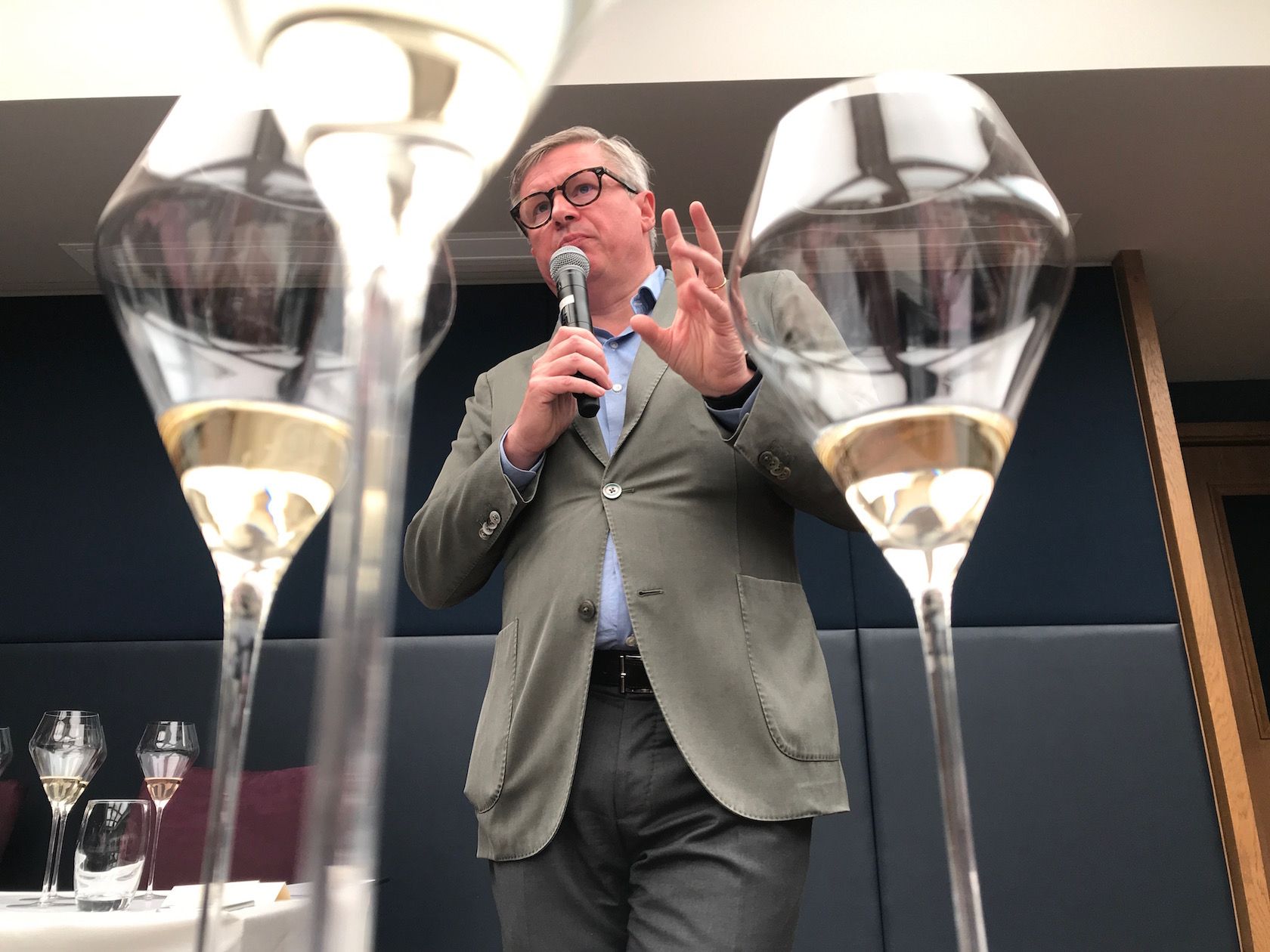For Lécaillon, Cristal 2008 was the turning point. “I am so happy with ’08 – it is 40% organic and biodynamic farming and it was starting to touch what we were aiming for – delivering what could be a more intense expressive and unique taste.”
When Jean-Baptiste Lécaillon launched Cristal 2008 three years ago he rated it as his best yet and called it the mother of all Cristals. In fact his actual words were “the Cristal of all Cristals.”
Fast forward three years to April 20, 2021 and he is launching Cristal 2013, which he thinks is better – 2008 with ‘all whistles and bells’. So where does he go from there?
“Yes I did say 2008 was the Cristal of all Cristals… but 2013 is the new 2008, or rather I should say it is 2008-PLUS… Cristal 2013? it is the Cristal of all Cristalssssss,” he says imitating an infinite musical note.
It was like the moment in mockumentary Spinal Tap, when lead guitarist Nigel Tufnell explains why one guitar is better than another with the answer “Yeah, but this one goes to 11.”
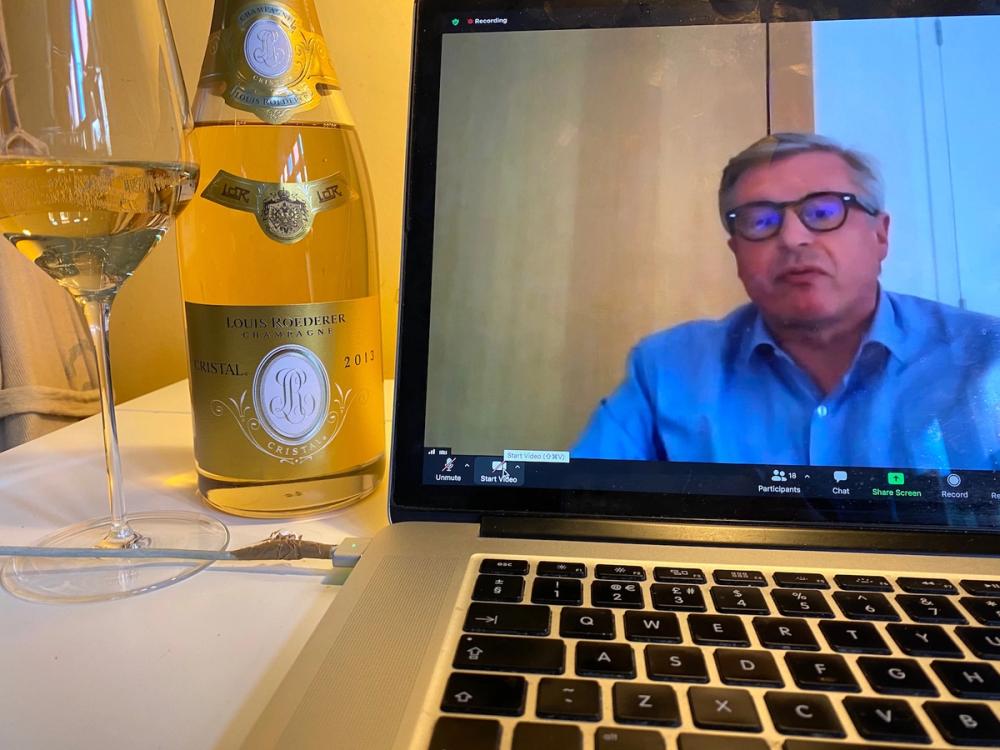
Jean-Baptiste Lécaillon presenting Cristal 2013, April 20, 2021
Not so obsessed with chasing House style
Cristal 2013 is a magnificent achievement, let’s get that out there straight away. Some things are familiar and have stayed the same, the terroir obviously, the 60/40 blend of Pinot Noir and Chardonnay but almost every other aspect is fluid from Lécaillon’s point of view, from work in the vineyard through to work at the winery.
It’s all part of his new approach to be dictated more by the vintage and make Cristal more approachable from a young age.
“The vintage ID is more important than House style,” he says, “I have been focussing more on the terroir – white chalk – and the vintage… you shouldn’t be reproducing the same thing every year.”
He describes his approach now as “more transparent – in a laid back way – I am not looking at a new vintage obsessed with our style but looking at the new vintage as a new challenge, I look at it and what we should we do to make the best of it. Before we wanted to get something from the wine now we carefully follow it.”
He speaks of ‘trusting terroir’, something the big Houses didn’t speak about just a few decades ago, but which has informed his 32 years at Louis Roederer – when he took the top job as chef de cave in 1999 he insisted that he also take charge of the vineyards as well. Since then he has been experimenting with both organic and biodynamic agriculture, increasing root depth into the chalky/ clay soil, partly as a way of steeling the vines against climate change, partly as a way of letting the wine speak more clearly of its provenance. Cristal 2013 is the second vintage to feature 100% biodynamically farmed grapes.
For Lécaillon Cristal 2008 was the turning point. “I am so happy with ’08 – it is 40% organic and biodynamic farming and it was starting to touch what we were aiming for – delivering what could be a more intense, expressive and unique taste.”
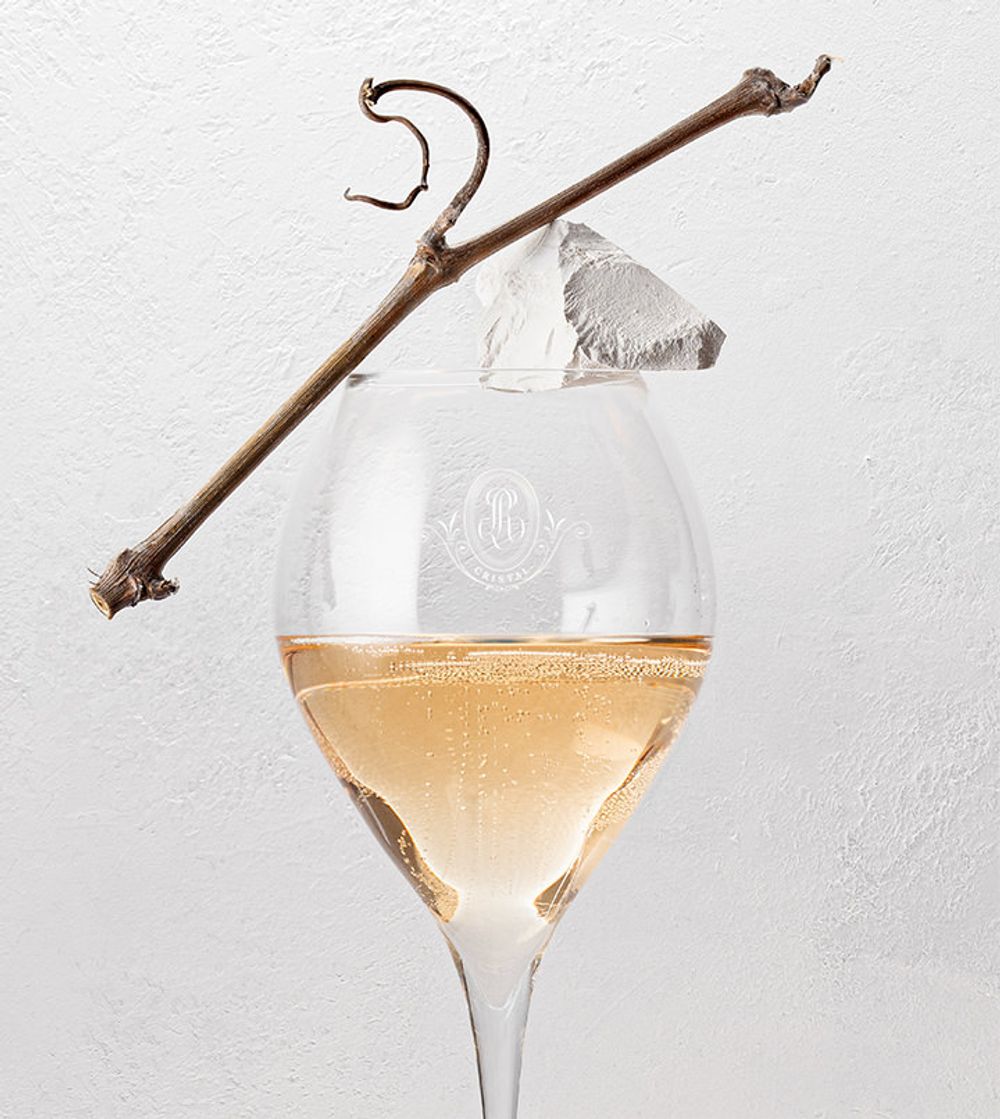
A fine balancing act between chalk and sunshine
Interestingly, Lécaillon practices both biodynamic and organic agriculture across 410 plots, vinifying plots separately, so that final blending can have greater scope and flexibility. Biodynamic is more suited to warmer years and organic to cooler, he believes, although even now he confesses to still learning what each method brings to the wine.
“At the same time as conversions to biodynamic the PH is dropping drastically…we have more acidity and more ripeness now which is interesting…. But when you trust your terroir, you can be more open to new things that may surprise you.”
Speaking philosophically about the growing season of 2013, and poetically too (this is Champagne after all) Lécaillon described the new wine as “a gift from nature.” He explained that he had to ‘fight in the vineyards’ during the wet Spring, carry out detailed sorting of the Pinot Noir, using fruit from just 30 of the total 45 lieux-dits, all the while creating a balance in his mind between terroir and vintage.
“It is inbetween the white soil and sunshine and when I blend I try and reach 50/50 dimensions, 50% soil and chalk and 50% sunshine and fruitiness. So 2012 was more on the sunshine, 2008 was a bit more on the soil side.”
One of the elements that Lécaillon has been finessing is the use of oak fermentation, which accounted for 20% of the 2008 final blend and has been increased in 2013 to 32%, a result of the quality of the biodynamically-farmed grapes, he believes, which ‘soak it up’. It is key in making the wine rounder and more approachable in youth.
“Since 2002, Cristal has become more approachable when young, which is down to the work we do with farming and more oak, which brings a lot more roundness but it is still long and beautiful with chalkiness and salinity,” he says.
He also used 19% malolactic fermentation in 2008 to soften the wine, with none needed in 2013. “But we didn’t do this in 2013, it had the right balance.”
Apart from these changes and a crucial difference in the PH, the 2008 and 2013 Cristal vintages are largely the same, technically-speaking – a point Lécaillon emphasises when making his point about why 2013 is 2008-PLUS.
“If you look at the figures in 2008 the average alcohol was 10.4 abv in all vineyards and it was 10.6 abv in 2013. The acidity in 2008 was 8.1gm per litre and 8.2 in 2013. The PH however was 2.93 in 2008 and 3.02 in 2013 which is a big difference. It showcases the ripe summer and gives 2013 a bit more fleshiness. The sugar/ acidity index is very close – so everything of ‘08 – the precision, chalkiness, saltiness, racy dimension and brightness – we got naturally in 2013.”
2013 – ‘the last of the cool vintages’
Biodynamic farming has also played a part he believes in giving extra concentration to Cristal 2013. This, plus a naturally low yield as a result of the cool weather which he describes as ‘the last of the cool vintages.’
The cold and wet Spring resulted in late ripening (a month later than 2020), but thankfully a hot summer compensated with low rainfall, followed by a classic cool September and October resulting in a lot of millerandage, and small bunches weighing between 90 and 100 grams when 120-140 grams is what is normally achieved.
“It’s therefore much more concentrated, with super concentrated aromas and an intense flavour – it is speaking loudly, it speaks its concentration, and the Chardonnay is really there with saltiness and expression.”
Although Lécaillon describes the Pinot Noir as beautiful (and indeed this showed in tasting the wine), in the Montagne de Reims there was botrytis, necessitating extensive sorting in the vineyard by his A-Team of pickers; he also revealed he has a B-Team that looks after the less problematic Chardonnay.
Harvest started on September 27 and finished on October 15 with the reduction in usable lieu-dits resulting in 20-30% less bottles of Cristal 2013 being made than 2008. Blend-wise Lécaillon hasn’t changed the customary 60/40, Pinot Noir/ Chardonnay split. Dosage is about the same between the two wines at 7.5-8gms dosage.
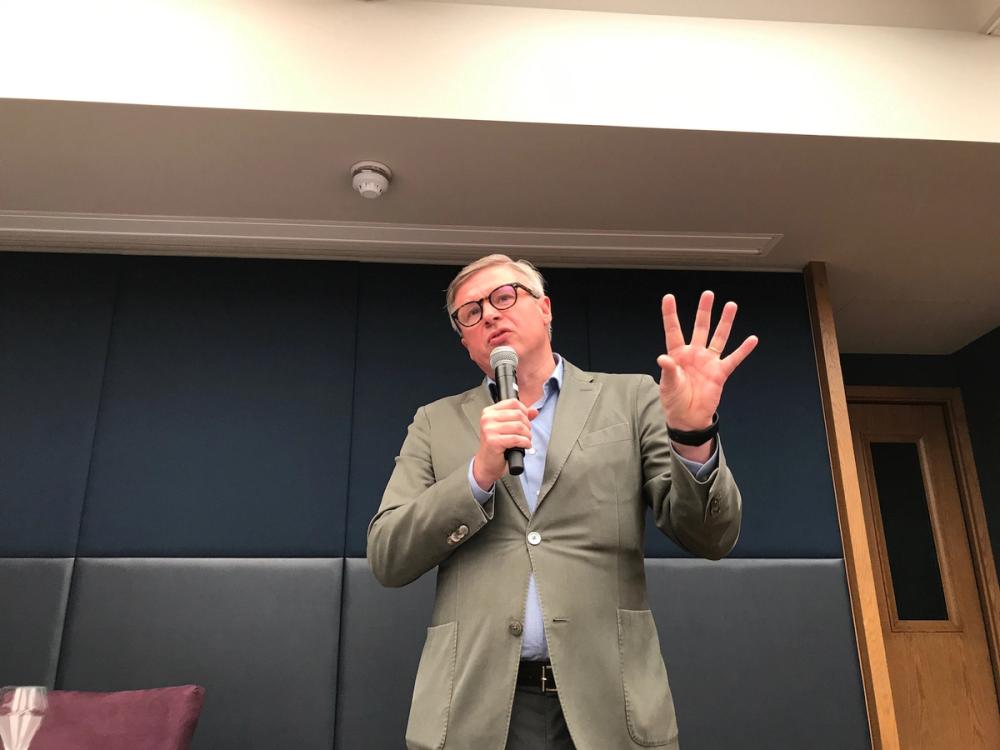
Presenting at 67 Pall Mall, June 2019
Looking ahead, Lécaillon promises a radical rethink about how the house looks at Brut Premier – an announcement is due this September – and his experimental vineyard is delivering progress on later-budding Pinot Noir, something which could be interesting in the future if this month’s April frosts become increasingly regular – he estimates they have 15% crop loss, although it is too early to tell exactly.
A Cristal Rosé 2013 (untasted) is being released, along with the magnums of Cristal 2008 and, like his contemporaries, he is waxing lyrical about the trio of vintages 2018, 2019 and 2020.
There will be no 2017 Cristal, as there was also no 2010 and 2011 in this decade but contrasts this with the 1970s, Champagne’s bête noir, in which nine vintages of Cristal were launched, making the point that perhaps now they are being more selective than ever.
And so to tasting the wine itself and, unsurprisingly, when Lécaillon describes it everything comes back to the chalk saying, to him, Cristal is “the Chassagne Montrachet of Champagne.”
“The length goes back to the chalk, the saltiness, sapidity, all the flavours – they are all coming from the chalk – it is mineral … it is light, a fresh expression of brightness – intense, bright and pure – all about energy here – a wine that has lots to give – so discreet…. maybe this is our Cristal DNA? to be shy at first sight.”
So how was Cristal 2013 tasting?
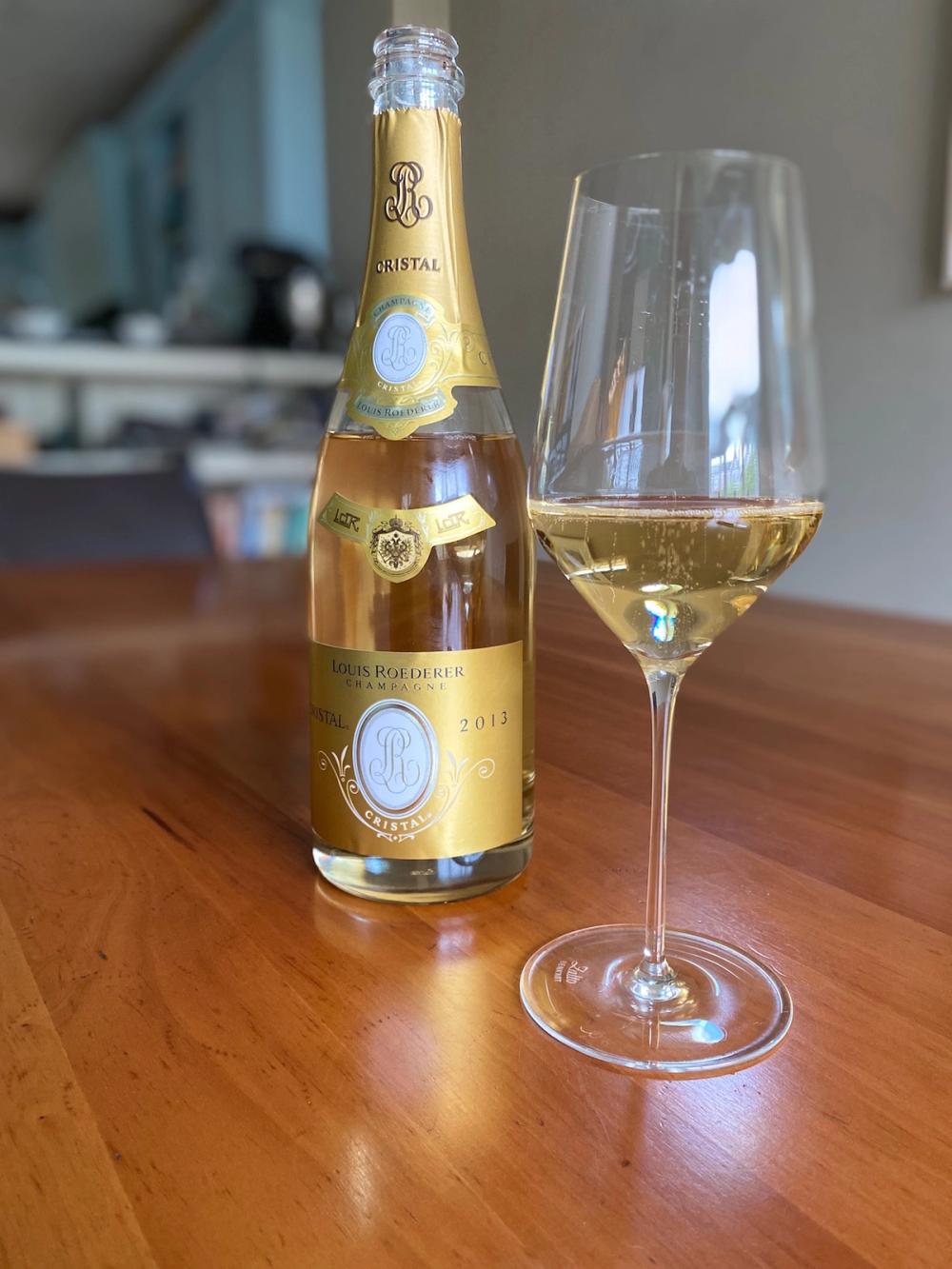
Cristal 2013, Louis Roederer
Cristal 2013 is a wine that is already multi-faceted, surprisingly so given its relative youth in the grand pantheon of prestige cuvées; the aromatics and flavours are complex, concentrated and pixilated, with floral and fruity notes interwoven with savoury.
Pale to medium shiny gold, the bead is inviting with fine, steady bubbles; powerful, intense aromas of ripe fruit (yellow plum), citrus peel, lightly roasted hazelnuts and honey – there’s so much going on here. The colour and the depth of the aromatics suggests more evolution than there is. From the first taste it is clear that this is a young Champagne.
The immediate attack has a pronounced salty note, then there’s an explosion of ripe fruits, soft, ripe, juicy and rounded, the mousse building with tactile energy and chalky freshness; the wine is highly textured, gently rasping your tongue with mineral, lime sorbet, and little spikes of detail – lemon zest, rye crumb, saline, the long finish quite savoury with bright, fresh lemon.
The wine is highly structured with that familiar Cristal laser-like acidity underpinning the fleshiness and ripeness of the fruit; it also has a real beginning, middle and end, although with its incredible length and the lasting impression it makes on the mind it is debateable if it does indeed actually end. Cristalsssssss indeed.
I don’t believe in wine scores but if I did I’d say ‘this one goes to 11’.
Louis Roederer Cristal 2013 is imported into the UK by MMD. Real price is £195.
